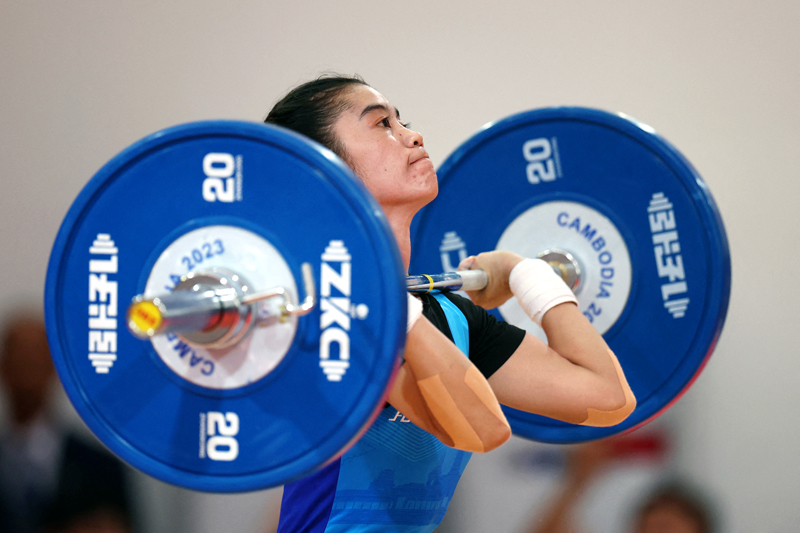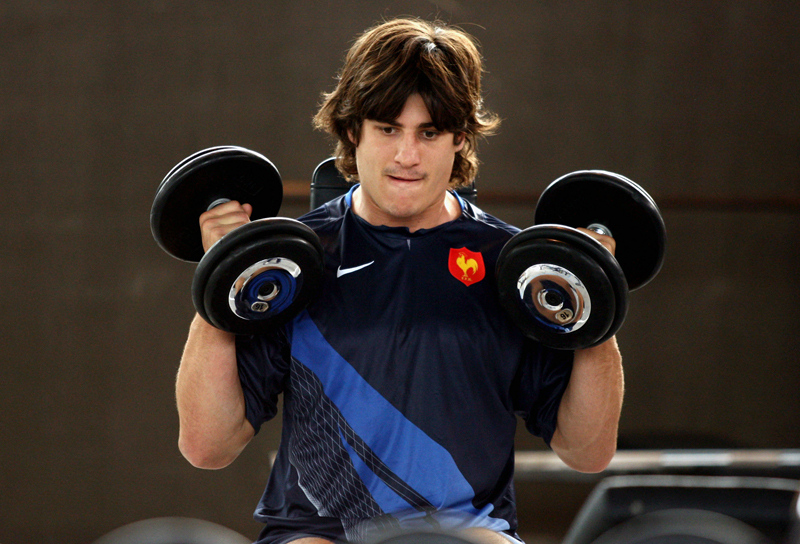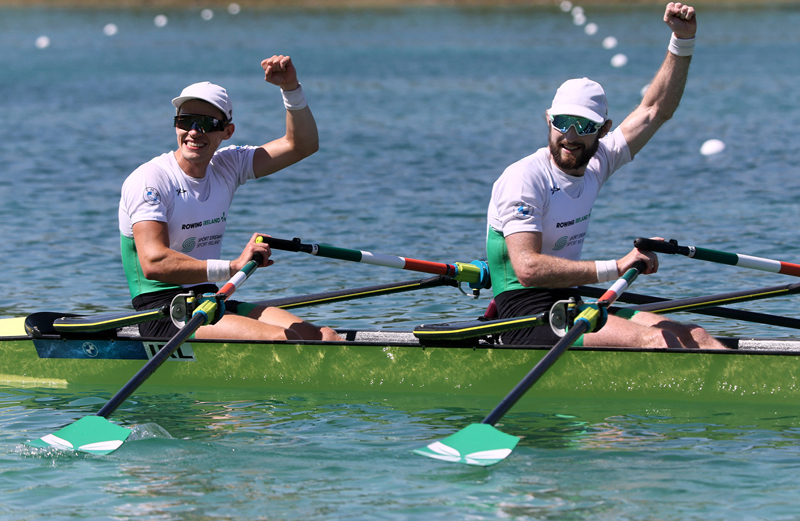You are viewing 1 of your 1 free articles. For unlimited access take a risk-free trial
Strength training: are two limbs better than one?
Andrew Sheaff looks at new research on unilateral vs. bilateral strength training. Is one better than the other and in what circumstances?
No matter who you are or what sport you play, strength training matters. Even if strength training were not to positively impact your performance, it would still be critical to prevent age-related losses in muscle function. And even if you’re still young, the stronger you are now, the better your strength will remain as you age. Strength training then is not controversial, but what is controversial is how athletes should strength train.
There are entire industries dedicated to promoting different types of strength training, both within the context of performance training, as well as fitness as a whole. There are advocates for using resistance bands, barbells, kettlebells, dumbbells, or just bodyweight. There are those who argue about whether high volume, low volume, high intensity, or moderate intensity is best. Some believe in training to failure while others do not.
Unilateral vs. bilateral strength training
One of the biggest controversies of all is the debate between unilateral and bilateral strength training – ie training the right and left legs/arms independently or together. This is especially true in regard to lower body strength training. Strength training for sport has its origins in the competitive sports of powerlifting and weightlifting - sports consisting entirely of barbell movements. And as a result, much of the early strength training in sport was performed with a bias towards bilateral training, where both sides of the body are worked simultaneously.
However, over time, proponents of unilateral training began to emerge. The argument was an intuitive one; ‘If most sports happen on one leg, or at least the legs are doing different things at different time, shouldn’t the strength training reflect that?’ As unilateral training looks more specific, and feels more specific, it seemed obvious that it was more specific and should thus lead to improved sports performance. This was a compelling argument for many, and an emphasis or an exclusive focus on unilateral training became more popular.
On the other hand, proponents of bilateral training made the argument that strength training is inherently non-specific, and so trying to replicate sports movements by using unilateral training is missing the point. They argued that the point is to get strong and develop the force production capabilities of the body. They believed using bilateral training is most effective because it allows for the largest loads to be used. They also argued that by practicing the athlete’s sport, all of the unilateral adaptations will take care of themselves.
So, what the answer? an answer even possible? There are a lot of conflicting opinions, anecdotes, and even a lot of studies examining the topic. But how can we cut through all of the noise to get some practical perspective on the topic? To provide some clarity using evidence from a range of previous studies as to which approach might be best, a group of researchers from China decided look at all of the relevant data to see what’s what by conducting a meta study (a study that pools data from a number of previous studies)(1).
The research
The researchers performed an exhaustive search of the literature, looking for any studies comparing the impact of unilateral and bilateral training on sports performance outcomes. After initially starting with over 1500 studies, they narrowed it down to 28 studies that met the inclusion criteria. They then performed a ‘meta-analysis’ of all the data. This is a statistical method that allows researchers to ‘combine’ different studies, as well as determine the impact of differences of study designs on the results.
The researchers wanted to know whether unilateral or bilateral training was superior for improving jumping ability, maximal strength, sprinting ability, change of direction, as well as balance. To go even deeper, the researchers compared the effect of the two approaches on both unilateral and bilateral maximal strength, and unilateral and bilateral jumping ability. Since unilateral and bilateral jumping and strength are different types of movement, they wanted to see if the specific test influenced the results. As sprinting, change of direction, and balance abilities are necessarily unilateral in nature, no such comparison was performed in their case.
What they found
The results were fairly clear cut; when it comes to improving sprinting, change of direction, and balance, unilateral training proved to be superior to bilateral training all cases. So if these attributes are important for performance in your sport, focusing on unilateral training is going to be a wise choice. However, some of the results were more nuanced. When it comes to unilateral jumping ability and unilateral maximum force production, unilateral training proved to be significantly more effective. But when these same outcomes were measured during bilateral activities, there was no advantage for unilateral training as the improvements were not significantly different. So, if your preferred sport involves exerting a lot of force or jumping activities leading with one leg, it appears that unilateral training is the better bet. However, if you’re interested in bilateral performance outcomes – eg jumping using both legs - you have some options in terms of what to do.
Practical applications for athletes
One of the clear take-home massages is that specificity remains an important aspect of performance training. When athletes need to perform on one leg, at least some of their strength training should be performed on one leg (eg lunges, single leg press etc). So, if that’s you, consider doing a significant portion of your strength training unilaterally. But if you perform mostly bilaterally (eg squats), you’re likely to get good results, especially if you combine that strength work with your sport training. Another key takeaway is that bilateral training still works, just perhaps not as well as unilateral training, and as such, it’s still a viable option. Conversely, if you love unilateral training go for it as it will be effective regardless of what your sport demands.
There is one caveat to these findings however. The subjects in all of these studies were not necessarily performing much or any sport activity. As a result, they were likely performing a lot less ‘unilateral training’ on a day-to-day basis. It’s reasonable to assume that if they were, some of the differences between unilateral and bilateral training would have been smaller because the subjects would have had more exposure to unilateral sports activities, thereby being able to perform better in the single leg test.
Therefore, if you are performing a lot of sport activity, and you really enjoy bilateral training, you’re likely okay to do bilaterally focused training. However, you can hedge your bets by doing including one or two sets of unilateral training in your bilateral training program. Another recommendation is that the less sport training you do, the more unilateral your strength training should be (remember, performing sport training helps the transfer of bilateral strength into unilateral activity).
In summary, the knowledge from the above study can help us make more educated decisions about how to implement strength training. Unilateral training clearly offers distinct benefits, and its inclusion makes sense. Bilateral training on the other hand is still effective, especially if it is topped off with unilateral sports activities. Therefore, including it as well won’t hurt your progress, and may even help it.
Reference
1. Front Physiol. 2023 Apr 13;14:1128250. doi: 10.3389/fphys.2023.1128250. eCollection 2023.
Newsletter Sign Up
Testimonials
Dr. Alexandra Fandetti-Robin, Back & Body Chiropractic
Elspeth Cowell MSCh DpodM SRCh HCPC reg
William Hunter, Nuffield Health
Newsletter Sign Up
Coaches Testimonials
Dr. Alexandra Fandetti-Robin, Back & Body Chiropractic
Elspeth Cowell MSCh DpodM SRCh HCPC reg
William Hunter, Nuffield Health
Keep up with latest sports science research and apply it to maximize performance
Today you have the chance to join a group of athletes, and sports coaches/trainers who all have something special in common...
They use the latest research to improve performance for themselves and their clients - both athletes and sports teams - with help from global specialists in the fields of sports science, sports medicine and sports psychology.
They do this by reading Sports Performance Bulletin, an easy-to-digest but serious-minded journal dedicated to high performance sports. SPB offers a wealth of information and insight into the latest research, in an easily-accessible and understood format, along with a wealth of practical recommendations.
*includes 3 coaching manuals
Get Inspired
All the latest techniques and approaches
Sports Performance Bulletin helps dedicated endurance athletes improve their performance. Sense-checking the latest sports science research, and sourcing evidence and case studies to support findings, Sports Performance Bulletin turns proven insights into easily digestible practical advice. Supporting athletes, coaches and professionals who wish to ensure their guidance and programmes are kept right up to date and based on credible science.











